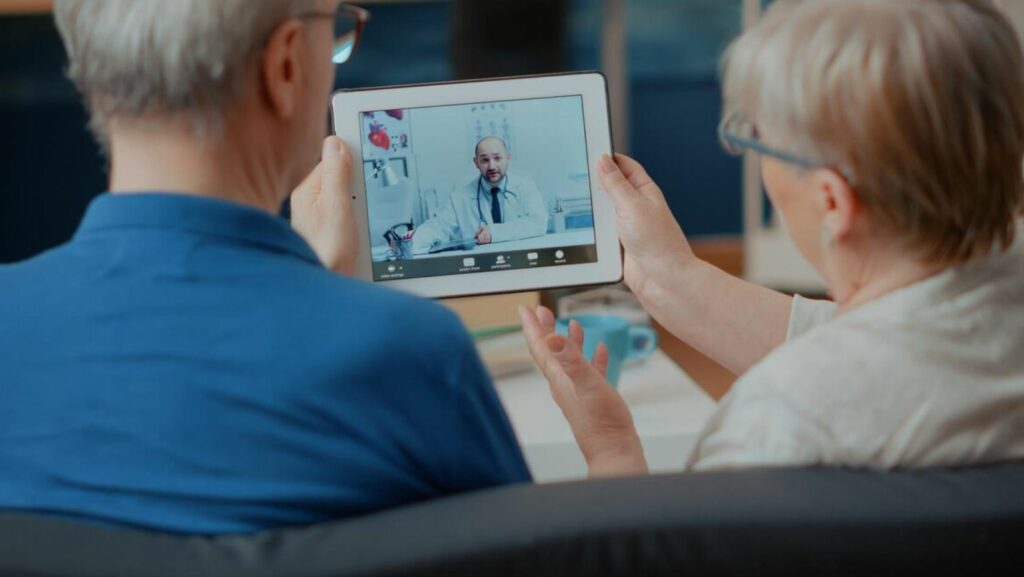The digital revolution in healthcare is reshaping patient care, making medical services more accessible, efficient, and compliant with evolving regulations.
Good faith exam telemedicine is one of the best examples of these medical advancements. It ensures providers conduct thorough patient evaluations before prescribing treatments. This approach meets legal requirements and enhances the quality of care, particularly in telehealth-driven consultations.
Continue reading to understand how telemedicine bridges the gap between regulatory compliance and high-quality patient care while transforming the healthcare landscape.
Healthcare regulations exist to protect patients and ensure they receive appropriate, safe, and effective treatments. Telemedicine must align with these regulations, requiring providers to meet the same standards as in-person consultations.
State and federal laws dictate how healthcare professionals should conduct virtual examinations, prescribe medications, and manage patient records. The good faith exam requirement, for example, mandates that a provider establishes a legitimate provider-patient relationship before issuing a prescription.
Telemedicine solutions are now incorporating secure digital tools to facilitate compliance, such as:
- Electronic Medical Records (EMRs): Secure storage and easy retrieval of patient histories.
- Video Consultations: Real-time interactions that replicate in-person evaluations.
- AI-Assisted Documentation: Automated compliance tracking to reduce errors and streamline workflows.
Integrating these technologies enables healthcare providers to conduct thorough patient assessments, mitigate legal risks, and maintain adherence to medical board regulations while ensuring optimal patient outcomes.
Enhancing Patient Care Through Telemedicine
Beyond compliance, telemedicine plays a pivotal role in elevating patient care standards. Virtual consultations have made healthcare more accessible, particularly for individuals in rural or underserved areas. Patients can now consult specialists, receive prescriptions, and monitor chronic conditions without geographical limitations.
Additionally, telemedicine enhances patient engagement by offering convenient follow-ups and real-time health tracking. Many digital health platforms include features like remote patient monitoring, which allows physicians to track vital signs and adjust treatments accordingly. This proactive approach reduces hospital readmissions and improves long-term health outcomes. It also enhances patient satisfaction with more convenient access to care.
Telemedicine in Medspa and Aesthetic Medicine Compliance
Medspas and aesthetic practices are increasingly leveraging telemedicine for consultations, follow-ups, and compliance with medical board regulations.

In aesthetic medicine, procedures such as Botox injections, dermal fillers, and laser treatments often require a licensed provider’s evaluation before treatment. Telemedicine enables practitioners to conduct virtual assessments, document medical histories, and ensure compliance with state regulations.
Furthermore, platforms designed for aesthetic telemedicine streamline appointment scheduling, consent documentation, and patient education. As a result, administrative burdens are reduced while maintaining the high standards expected in medical aesthetics.
The Role of Digital Solutions in Regulatory Compliance
Digital healthcare solutions play a crucial role in ensuring that telemedicine remains compliant with healthcare laws. Secure telehealth platforms are designed with encryption protocols, HIPAA-compliant storage, and AI-driven data analytics to safeguard patient information.
Automated compliance tracking tools can alert healthcare providers of regulatory updates, ensuring that telemedicine practices align with the latest legal requirements. Additionally, e-prescription systems with built-in safety checks help prevent misuse while promoting responsible prescribing habits. These innovations collectively reinforce the credibility and reliability of telemedicine services.
The Future of Telemedicine and Compliance
As telemedicine continues to evolve and become more common, regulatory frameworks will adapt to accommodate new technologies and medical advancements. Healthcare organizations must remain proactive in adopting compliance-driven telehealth solutions to navigate the complexities of virtual care.
The integration of AI and machine learning in telemedicine is expected to:
- enhance diagnostic accuracy
- automate documentation
- improve provider efficiency
Meanwhile, policymakers will likely introduce refined guidelines to balance accessibility, patient safety, and legal adherence. Staying informed and leveraging cutting-edge digital tools will allow healthcare providers to continue delivering high-quality care while maintaining compliance in an increasingly virtual landscape.
Effective Implementation of Telemedicine
Considering the value that telemedicine brings in terms of compliance and quality patient care, effective implementation is crucial for healthcare providers.

A well-structured telemedicine program requires strategic planning, technological integration, and staff training to maximize its benefits. Some of the key factors in its successful implementation include:
- Choosing the right platform: Providers should invest in secure, HIPAA-compliant telehealth software that integrates with existing medical record systems.
- Ensuring staff training: Educating healthcare professionals on telemedicine best practices, compliance requirements, and digital tools is essential for seamless adoption.
- Optimizing patient experience: Clear communication, user-friendly interfaces, and reliable technical support help ensure patients feel comfortable using telehealth services.
- Monitoring and adapting: Regular evaluation of telemedicine processes allows providers to refine their approach and address emerging challenges.
Prioritizing the above aspects is integral for healthcare organizations to establish a robust telemedicine system that meets regulatory standards while enhancing patient care.
Conclusion
Telemedicine is making patient care all the more better by improving accessibility, streamlining compliance, and integrating innovative digital solutions. From good faith exam telemedicine requirements to AI-powered documentation, the healthcare industry is experiencing a transformation that prioritizes both legal adherence and patient well-being.
Telemedicine will remain a cornerstone of modern healthcare even in the face of changing industry regulations. With its capabilities, using it allows providers to deliver safe, efficient, and compliant medical services.

